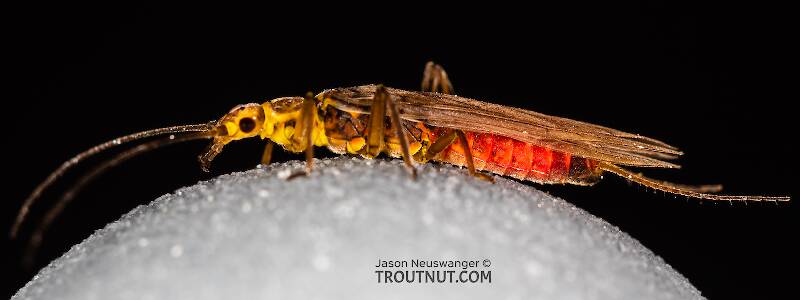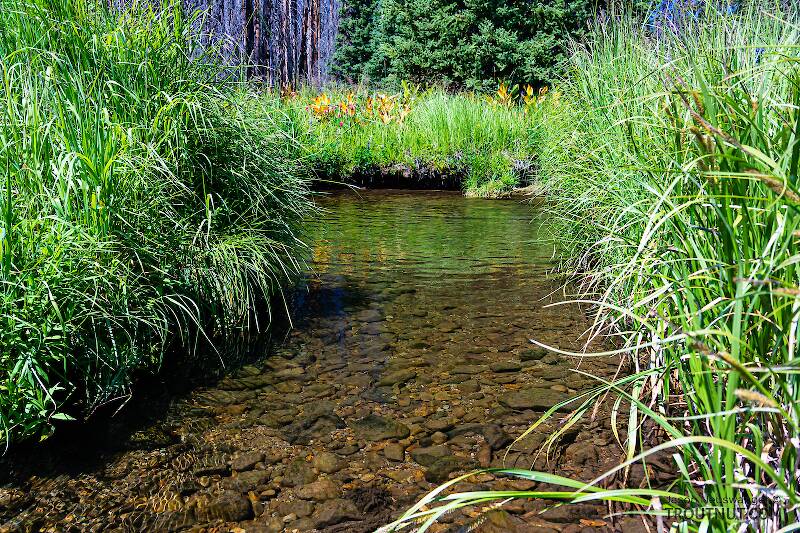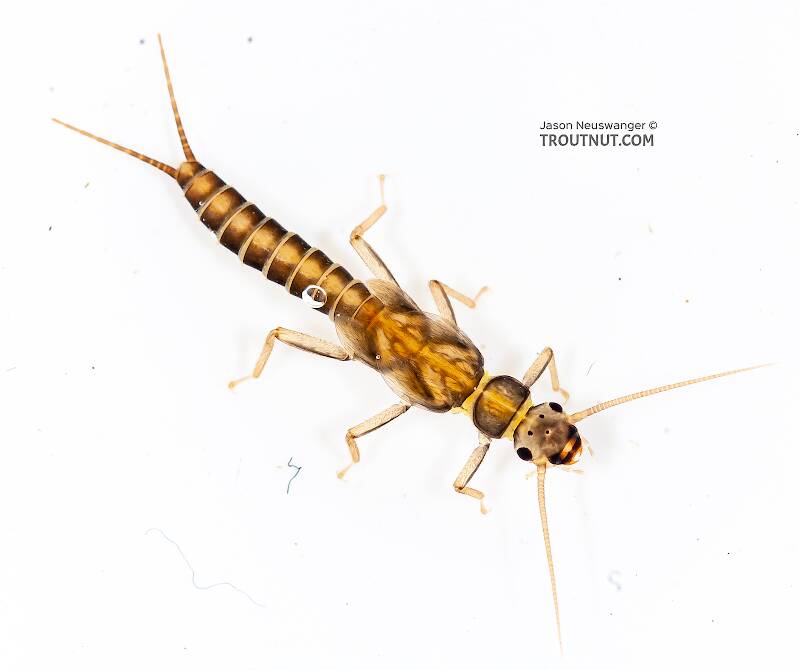
Hex Mayflies
Hexagenia limbata
The famous nocturnal Hex hatch of the Midwest (and a few other lucky locations) stirs to the surface mythically large brown trout that only touch streamers for the rest of the year.
Featured on the forum

This is the first of it's family I've seen, collected from a tiny, fishless stream in the Cascades. The three species of this genus all live in the Northwest and are predators that primarily eat stonefly nymphs Merritt R.W., Cummins, K.W., and Berg, M.B. (2019).

Troutnut is a project started in 2003 by salmonid ecologist Jason "Troutnut" Neuswanger to help anglers and
fly tyers unabashedly embrace the entomological side of the sport. Learn more about Troutnut or
support the project for an enhanced experience here.
Sallflies
This common name refers to only one family. Click its scientific name to learn more.
Stonefly Family Chloroperlidae
These are often called Sallflies.
These stoneflies, the "little yellows" and "little greens," are quite common Summer fauna. They are spread out in a mix between the different genera. The common name for them is Sallfly.

These stoneflies--abundant during midday--seemed at first to be flying around with plain yellow bodies, but on closer inspection turn out to have striking, fiery red abdomens.
See 30 more specimens...
References
- Merritt R.W., Cummins, K.W., and Berg, M.B. 2019. An Introduction to the Aquatic Insects of North America (Fifth Edition). Kendall/Hunt Publishing Company.


